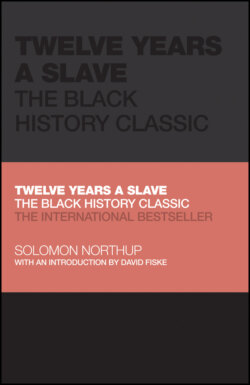Читать книгу Twelve Years a Slave - Solomon Northup - Страница 9
INTRODUCTION
ОглавлениеBY DAVID FISKE
Slavery is among the greatest stains on human history. Appropriating a person's ability and right to pursue a livelihood and life of his or her own choosing – not temporarily, but for the remainder of their life – is a gross violation of natural law.
In the United States, the legacy of slavery – born out of endemic racism – is a cross the nation still bears. We all wish that slavery had been erased from our communities much earlier than it was. Slave narratives like Twelve Years a Slave rend the heart of every reader, and are a portal for deeper understanding of what happened.
This Introduction looks at the contribution of Solomon Northup's book to that understanding. I will try to give an account of the world in which Northup lived, the man himself, the kidnapping phenomenon, and finally how far we have come on slavery since Twelve Years a Slave was written.
***
My Solomon Northup journey began one day in the 1990s, on a visit to the Old Fort House Museum in Fort Edward, New York. It is a place with a rich history (including having once hosted George Washington), but what drew my attention was the fact that an African American named Northup had once lived there as a housekeeper with his wife. I learned that he had been kidnapped before the Civil War, sold into slavery, then rescued years afterward. I was especially struck that, at a time when there were few African American authors, Northup had written a book.
Having obtained a copy of Twelve Years a Slave, like most people I found it riveting and began to wonder about the rest of the story. Northup's narrative ends in 1853, the year he was liberated and rejoined his family. But what was the remainder of his life like? He had experienced horrific things as an enslaved man and must have had trouble dealing with them, even after regaining his freedom (today, we would likely say he suffered from post-traumatic stress disorder). I had just learned the basics of genealogical research, and realized that the types of resources used by family history researchers could be put to work to learn more about Northup's later life.
In 1999, Union College in Schenectady, New York, commemorated Northup with an exhibit and also a series of lectures and seminars coordinated by Union College's Professor Clifford Brown. Local awareness of Northup's story was enhanced by the placing of a historical marker in Saratoga Springs, New York, and also the creation of Solomon Northup Day by African American resident Renee Moore.
A band of Northup researchers and enthusiasts, including myself, would meet and compare notes. Our efforts did increase awareness, but what seemed lacking was a full biography of Northup that told the story in complete and included all recent research. In 2013, we published Solomon Northup: The Complete Story of the Author of Twelve Years a Slave (David Fiske, Clifford Brown & Rachel Seligman), which coincided with Steve McQueen's award-winning film 12 Years A Slave. Our joint findings added greatly to an understanding of Northup and his trials and tribulations. He could now be understood not just as a historical name, but as a human being who was forced to deal with misfortunes that were not of his own making.
It had been my hope that with the film's success, my research would gain attention and that some helpful person would come forward and shed light on the most aggravating aspect of my Northup quest: the circumstances of his death. Though I have received some information, the mystery of his final years is yet to be solved.
Advertisement placed by James H. Birch, the slave dealer who originally purchased Solomon Northup. From Birch's slave pen in Alexandria, Virginia (now the Freedom House Museum), Northup was sold on to slave dealers in Louisiana.
